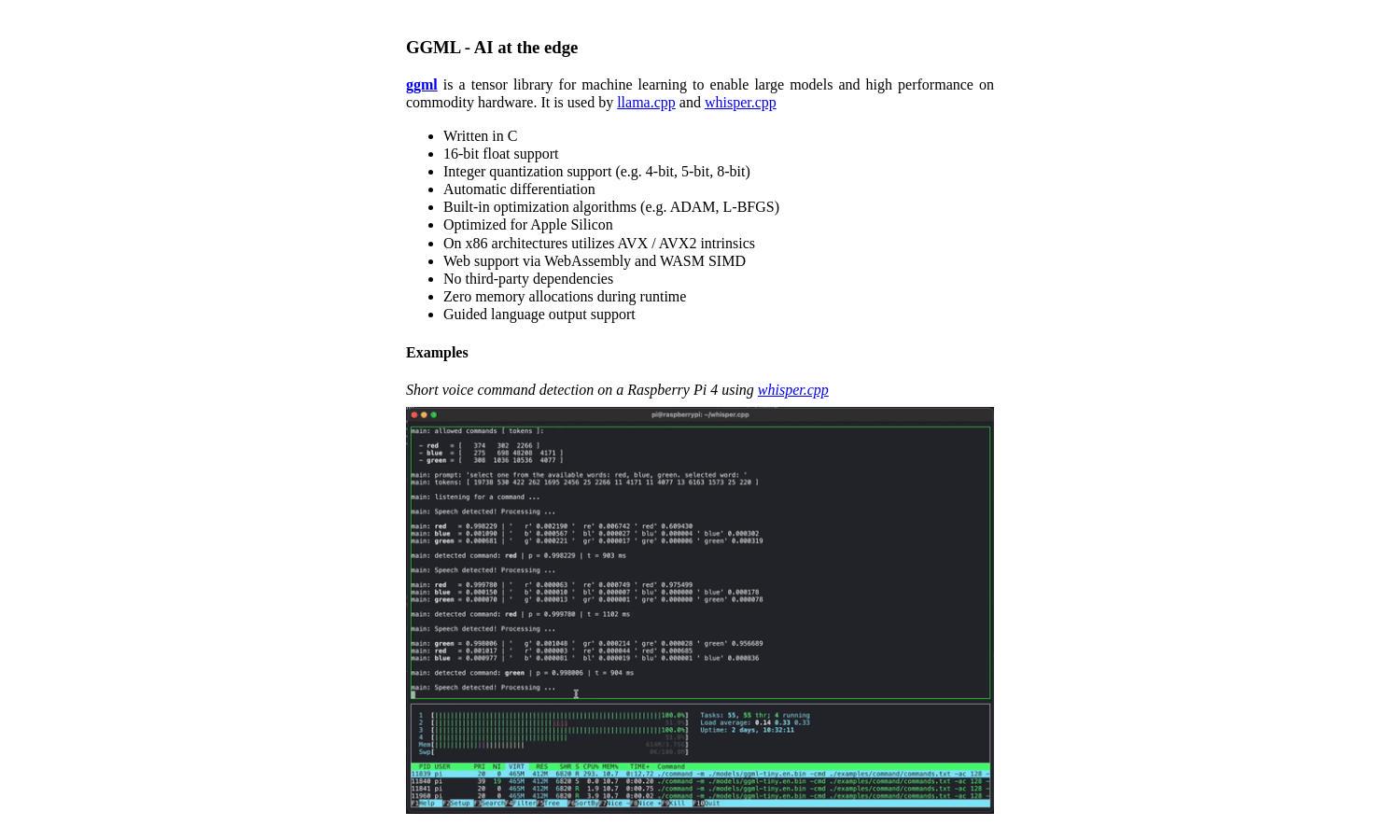ggml.ai

About ggml.ai
ggml.ai is a cutting-edge platform designed for developers seeking to leverage machine learning efficiently. Its unique, minimalistic tensor library facilitates high-performance on commodity hardware, making advanced AI accessible to a broader audience. Users can experiment and contribute, driving innovation in on-device inference.
ggml.ai offers open-source access to its tensor library under the MIT license. While collaboration is encouraged, users can explore potential premium extension features in the future. Currently, ggml.ai thrives on community contributions and support from sponsors, enriching its capability and reach.
ggml.ai features a user-friendly interface that simplifies navigation through its machine learning tools. The platform's minimalist design focuses on functionality, allowing users to engage effortlessly with advanced features, fostering a seamless experience while exploring innovative projects in AI development.
How ggml.ai works
Users at ggml.ai begin by accessing the open-source tensor library, where they can download and set up the preprocessing tools necessary for their projects. The platform’s straightforward onboarding process allows interaction with core functionalities, such as automatic differentiation and model inference. Users can contribute ideas or demos, enhancing their experience while pushing the boundaries of machine learning.
Key Features for ggml.ai
Automatic Differentiation
ggml.ai’s automatic differentiation feature is a key functionality that streamlines the training of machine learning models. This unique capability enables users to effortlessly compute gradients, further enhancing the efficiency and accuracy of their models, thereby significantly simplifying the optimization process.
Integer Quantization Support
Integer quantization support at ggml.ai helps optimize machine learning models for performance on lower-powered hardware. This feature reduces memory usage and enhances processing speed, making it ideal for on-device applications while ensuring users can deploy AI efficiently across diverse platforms.
Cross-Platform Implementation
ggml.ai features a low-level cross-platform implementation, enabling developers to run machine learning models seamlessly across a variety of operating systems. This flexibility ensures that users can leverage their existing hardware without compromising performance, making ggml.ai a versatile tool for developers.








